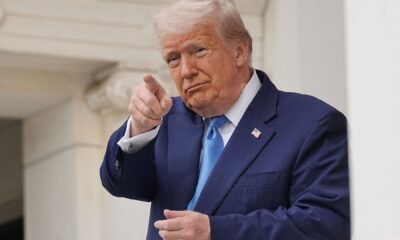LONDON — Some investors are expressing a growing optimism about the U.K.’s economic outlook despite the country’s long-standing structural weaknesses, as its neighbors in the European Union deepen their trade dispute with the United States.
That upbeat tone wasn’t reflected in the messaging of the Bank of England, as it held interest rates steady last Thursday, citing increased geopolitical uncertainty and indicators of financial market volatility. However, U.K. economic growth — tepid at best for the last three years — is finally expected to pick up somewhat in 2025, with Bank of America analysts forecasting a 1.4% expansion.
Inflation is still expected to cool back near-target in the months ahead, the labor market is loosening but remains robust, and the U.K. government has a determined focus — at times controversially — to support growth and reduce the national deficit.
Sanjay Raja, chief U.K. economist at Deutsche Bank, said that, on a recent client trip to the U.S. he noted a “budding sense of optimism” around the U.K. not seen in some time.
Key factors included a pivot toward deregulation and focus on more capital spending, the potential for a strong trade deal with the EU in the coming year, and an expectation the the U.K. will “stay in the US’ ‘good books’ as a trade war kicks off,” Raja said in a note earlier this month.
U.S. President Donald Trump has expressed a willingness to spare the U.K. from blanket or targeted tariffs, with expectations bolstered after U.K. Prime Minister Keir Starmer conducted a friendly trip to the White House in February.

“Talk of a U.S. trade deal also surfaced in client conversations, and there was increased optimism that the U.K. may be spared from direct and widespread tariffs,” Raja said.
Some felt “structural growth could be on the rise after a steady decline since the global financial crisis,” he continued, while a broad European push to increase national defense spending could benefit U.K. corporates. Points of concern for investors remained January’s sell-off in U.K. government debt, fiscal headroom and the sustainability of spending cuts, Raja observed.
Still trade risks
The U.K. may have been spared the worst of Trump’s rhetoric so far — such as his threat of 200% tariffs on EU alcohol imports — but it is not totally immune from Washington’s protectionist push.
Gabriella Dickens, G7 economist at AXA Investment Managers, noted that the U.K. still faces a hit due to the new U.S. tariffs on steel and aluminum. The U.K. exported a total of £370 million ($479.7 million) in steel to the U.S. in 2024, according to trade group UK Steel, accounting for 9% of total U.K. steel exports by value. Britain’s aluminum exports to the U.S. totaled were valued at around £225 million last year, the U.K.’s Aluminium Federation says.
The U.K. will also be impacted by any slowdown in global trade, including if this leads to weaker demand in its key partners such as the EU, and if general uncertainty erodes business and consumer confidence, Dickens told CNBC.
“Investor sentiment may be boosted if the U.K. manages to avoid further tariffs, particularly if trade tensions ramp up with the EU,” Dickens said. In the unlikely event Trump follows through with his prior threat of blanket 25% tariffs on the EU, a “material boost” would be provided to the U.K. as manufacturers would likely look to relocate, she said.

The U.K. could still avoid further tariffs, since it has no large trade surplus with the U.S. and the majority of that is services-based. It has already pledged to boost its defense spending as a share of gross domestic product (GDP), avoiding much of Trump’s ire with other nations.
“Neither of these have spared the U.K. from the steel and aluminum tariffs, though,” Dickens added.
Lindsay James, investment strategist at Quilter Investors, also stressed the existing impact of steel and aluminum duties on the U.K. and flagged potential risks from the reciprocal U.S. tariffs due to be announced early April.
“The idea that VAT is some kind of tariff seems to have taken hold in the White House, placing the U.K. once again at considerable risk of coming into the crosshairs of U.S. trade policy,” James told CNBC.
“Whilst the reality is likely being willfully misrepresented by the White House in order to gain a negotiating advantage, the U.K. is not yet in the clear and, if Donald Trump’s demands on Ukraine are anything to go by, any future trade deal would likely come at a heavy price.”
James added that, while the government was improving the foundations of the U.K. economy in the long run, growth remained on a weak trajectory in the near term, with businesses hit by higher costs stemming from last year’s budget and continued issues with an “older and sicker workforce.”
“Whilst the [U.K.] stock market has so far benefitted from its perception of defensiveness, a modest starting valuation and a strong performance from heavily represented sectors such as oil and gas and financials, the divergence from the performance of the economy could lead to the large cap index continuing to outperform domestic stocks,” she said.

 Accounting1 week ago
Accounting1 week ago
 Economics1 week ago
Economics1 week ago
 Personal Finance1 week ago
Personal Finance1 week ago
 Accounting1 week ago
Accounting1 week ago
 Finance1 week ago
Finance1 week ago
 Economics1 week ago
Economics1 week ago
 Economics1 week ago
Economics1 week ago
 Economics1 week ago
Economics1 week ago






















